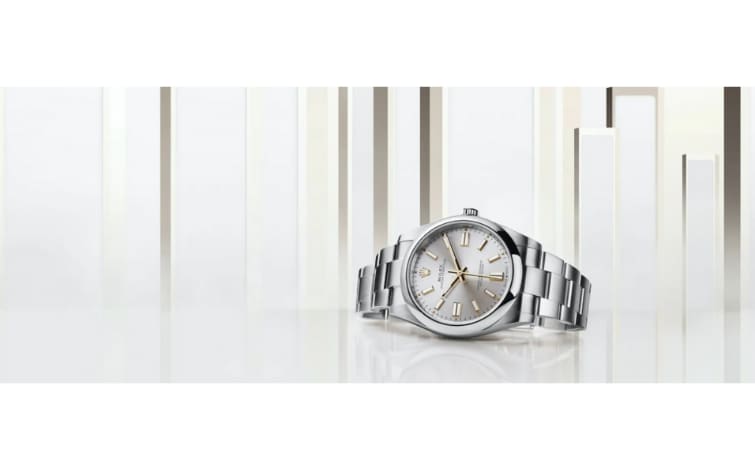Each Rolex holds a personal and unique story that accompanies the wrists of great talents along a trajectory marked by excellence and effort. These same values are shared by the prestigious Swiss brand in that it rigorously selects the materials it uses and meticulously works on the assembly of each of its models. Each watch is subjected to different tests, until a perfect result is achieved: the guarantee of durability over time.
Currently the brand offers a wide range of models to not only fit any wrist but also any history and lifestyle. Throughout the history of Rolex, its founder Hans Wilsdorf worked tirelessly on the innovation, functionality and precision of his watches, with some Rolex models pioneering new functionalities in terms of wristwatches.
Let’s take a look at some Rolex models: a perfect combination of style and functionality.
Classic models
Oyster Perpetual: Christened “Oyster” in 1926 because it was the first dust- and water-tight watch. It is the classic of the classics. Initially, it was equipped with a hermetically-sealed case to ensure maximum protection. It accompanied the English swimmer Mercedes Gleitze on her more than ten-hour crossing of the English Channel. The common denominator of this family is its classic and timeless design, and they are made exclusively of Oystersteel.
Cellini: A quintessential classic family that celebrates the timeless elegance of traditional watches with a touch of modernity. It is named after the Italian Renaissance artist Benvenuto Cellini. This collection has its origins in the sixties and arises from the need to introduce a more formal model, instead of the sporty models that were available until that time. True to their understated and refined traditional style, these watches are currently available only with a black or brown leather strap and a 18kt gold buckle.
Models for the more adventurous
GMT-Master II: The Rolex model designed for the most traveled. A model born in 1955 with the particularity of showing the time in two time zones simultaneously. Originally developed as a navigation tool for professionals traveling the world, it has now emerged as a favorite among a wider audience that shares travel as a way of life.
Explorer: Known as the watch of the summits, this model was born in 1953 and stands out for its simple design and easily readable black dial with large hands and characteristic numerals 3, 6 and 9. It is a watch that has proven its reliability under the most extreme conditions.
Submersible models
Submariner: The Rolex model that embodies the brand’s historical link to diving. In 1953, Rolex introduced the Submariner as the first diver’s watch to guarantee water-resistance to a depth of 100 meters. Its rotating bezel allows divers to read their dive time in complete safety. During a dive, being able to read the time without misunderstanding guarantees survival.
Sea-Dweller and Rolex Deepsea: The Sea-Dweller —introduced in 1967— and the Rolex Deepsea
—introduced in 2008—, watertight down to a depth of 1,220 and 3,900 meters, respectively, are proof of the Swiss brand’s leadership and predilection for deep-sea diving. The Sea-Dweller has a 60-minute graduated unidirectional rotating bezel that allows you to view dive and decompression times in complete safety.
Competition watches
Cosmograph Daytona: The Rolex model designed for the world of automobiles and speed. In fact, the name was inspired by the U.S. city of Daytona, where the passion for racing originated. This watch was created in 1963 to meet the chronometric requirements of high-performance drivers. Thanks to its tachymetric scale, three counters and pushers, this powerful design is the ultimate timing tool for endurance racers.
Different Rolex models for wrists that tell different stories.


